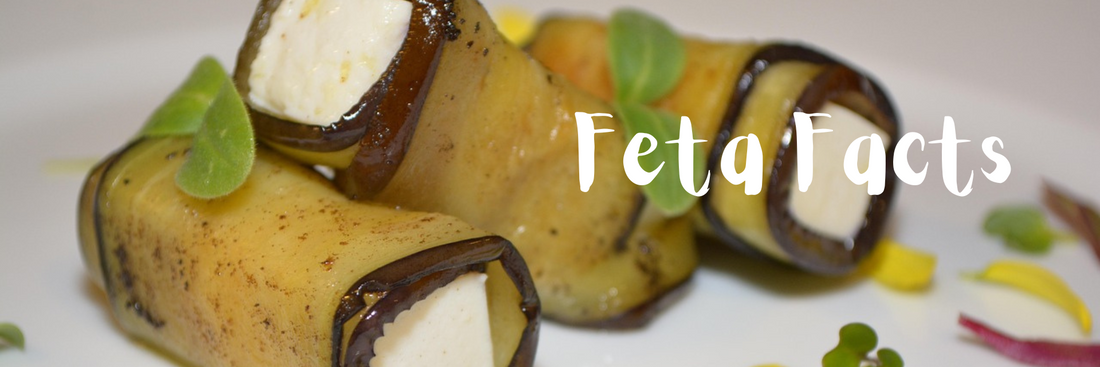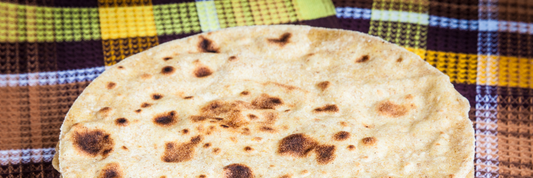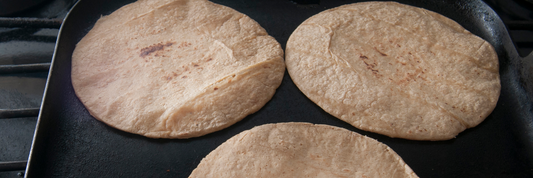Feta cheese is a beloved Mediterranean staple, known for its tangy flavor, crumbly texture, and rich heritage. Traditionally made from sheep’s milk or a mix with goat’s milk, authentic feta holds PDO status, ensuring it’s crafted the Greek way. Packed with protein, calcium, and probiotics, it’s as nutritious as it is flavorful. From salads to baked dishes, this guide covers everything about feta its origins, types, health benefits, and tasty ways to enjoy it.
- What Cheese Is Low in Cholesterol? Best Choice for Heart-Healthy Diets
- Feta Cheese Explained: Origin, Health Benefits, and Serving Ideas
- How to Identify Different Types of Cheese
What Is Feta?
Feta is a uniquely iconic brined white cheese with a rich history and a distinctive profile that sets it apart from other cheeses. Traditionally made from sheep’s milk or a combination of sheep and goat’s milk, feta’s production follows strict regulations in its native Greece, where it has been crafted for thousands of years. This cheese is synonymous with the Mediterranean diet, where it plays a crucial role not only for its flavor but also for its cultural and nutritional significance.

Definition of Feta
At its core, feta is a white cheese characterized by its preservation in a salty brine a solution of saltwater that gives it its signature sharpness and moisture. The use of sheep’s milk, sometimes combined with up to 30% goat’s milk, contributes to the cheese’s rich and tangy flavor. Unlike many other cheeses that are aged on wooden boards or in caves, feta is matured in these brine tanks, typically for at least two months. This process preserves the cheese, enhances its complexity, and ensures a crumbly yet creamy consistency that is integral to its texture.
The Protected Designation of Origin (PDO) status awarded by the European Union in 2002 is a testament to feta’s cultural and historical authenticity. This certification mandates that only cheese produced in certain regions of Greece, adhering to traditional standards and methods, can be legally sold as “feta.” This protection emphasizes the importance of terroir climate, soil, and livestock diet in crafting its unique flavor.
Origin of Feta
Feta’s origins trace back over two millennia to ancient Greece, where it was initially referenced in classical texts such as Homer’s Odyssey. Throughout history, it has been a staple in Greek households, shepherd communities, and feasts, symbolizing simplicity and sustenance. The milk from local sheep and goats grazing on native herbs and wild shrubs significantly influences the flavor profile of authentic feta, adding an aromatic complexity associated with its geographical origin.
The cheese holds not only gastronomic value but also cultural identity, representing Greek traditions and the Mediterranean lifestyle, which is centered around fresh, wholesome ingredients. With its high calcium content, probiotics, and protein, feta aligns well with health-conscious dietary frameworks worldwide.
Taste and Texture
The allure of feta lies largely in its distinct taste and texture:
- Flavor Notes: Feta offers a lively and sharp tanginess, combined with a pronounced salty bite from its brining. Its flavor profile can vary from mildly fruity and buttery in younger cheeses to more intense, nutty, and piquant in aged varieties. This dynamic flavor spectrum allows feta to complement diverse culinary applications.
- Salt Content: The saltiness is a hallmark of feta, not just for preservation but as a deliberate feature that brightens dishes and balances rich ingredients. The salt levels are carefully managed, contributing to feta’s savory punch without overpowering other flavors.
- Texture: Feta is notably crumbly, breaking apart easily, yet it retains sufficient moisture to give a creamy mouthfeel. Unlike firm aged cheeses, feta’s crumbly texture makes it ideal for sprinkling over salads or stuffing into pastries. It lacks a rind, as it is typically sold in blocks immersed in brine, maintaining its moistness.
- Color and Appearance: The cheese is pure white, dense, and often found in thick slabs or irregular chunks. Its slightly grainy but supple texture facilitates both melting and crumbling, depending on how it is used in cooking.
Common Uses
Feta’s wide culinary adaptability is one of its greatest strengths. It can be incorporated into dishes raw or cooked, cold or warm, savory or even sweet in some adaptations. Some common and traditional uses include:
- Salads: Feta is indispensable in Mediterranean salads. The classic Greek salad features generous crumbles of feta atop fresh cucumbers, tomatoes, olives, and red onions, adding a burst of tangy saltiness that contrasts beautifully with the crisp vegetables and acidic dressing.
- Pastries and Baked Goods: In Greek cuisine, feta is a key ingredient in savory pastries such as spanakopita, a spinach and feta pie and tyropita, a cheese-filled phyllo pastry. Its crumbly texture and salty tang meld with herbs and flaky crusts to create deeply satisfying flavors.
- Dips and Spreads: Blended feta combined with olive oil, garlic, and fresh herbs makes a flavorful dip or spread, perfect for dipping bread or vegetables. This use highlights feta’s creamy qualities while leveraging its underlying saltiness as a base flavor.
- Warm Dishes: Feta holds up remarkably well when baked or grilled. When exposed to moderate heat, it softens and slightly melts without losing its shape, making it ideal for dishes like saganaki (Greek fried cheese), casseroles, stuffed vegetables, or even warming atop pizza and omelets to add a rich, salty accent.
- Complement to Grains and Legumes: Feta is often incorporated into grain salads like tabbouleh or alongside hearty legumes such as lentils and chickpeas, where its acidic notes brighten and balance heavier ingredients.
Because of its unique characteristics, feta cheese enhances both everyday meals and celebratory dishes, adding complexity and authenticity. Its role in Mediterranean gastronomy is irreplaceable, and its healthful profile makes it a popular choice beyond its traditional boundaries.
Nutritional Benefits of Feta Cheese
Feta cheese is more than just a flavorful addition to Mediterranean dishes; it's a powerhouse of essential nutrients and unique health-promoting properties. Understanding the nutritional value of feta cheese helps clarify why it has become a staple in health-conscious diets, especially for those seeking nutrient-density in moderate portions.

Key Nutrients in Feta Cheese
Feta cheese is naturally rich in several nutrients that play critical roles in overall health:
- High-Quality Protein: Feta provides a source of complete protein, containing all essential amino acids needed for muscle repair and daily bodily functions. A typical serving (about 30g) delivers approximately 4g of protein, supporting tissue maintenance and enzyme production.
- Calcium: Known for its significant calcium content, feta cheese supports the strength of bones and teeth. Each serving supplies around 140mg of calcium, meeting a notable portion of daily requirements.
- B Vitamins: Feta is abundant in B vitamins such as riboflavin (B2), vitamin B6, and vitamin B12, which are important for energy metabolism, nervous system function, and the formation of red blood cells.
- Probiotics: Uniquely among cheeses, traditionally-made feta contains beneficial bacteria, including Lactobacillus plantarum and Lactobacillus fermentum. These probiotics support gut health and may enhance immune function.
Health Benefits of Feta Cheese
- Bone Strength and Dental Health: The synergy of calcium, phosphorus, and protein in feta cheese supports robust bone development and maintenance, reducing the risk of osteoporosis and dental issues. Unlike many other cheeses, feta sometimes has elevated levels of bioavailable calcium due to the acidic environment of sheep's and goat’s milk, from which authentic feta is made. This aids in efficient calcium absorption, further bolstering skeletal health.
- Digestive Support Through Probiotics: Feta cheese is traditionally unpasteurized and aged in brine, promoting the growth of beneficial bacteria. These naturally occurring probiotics help maintain a healthy balance in the gut, supporting digestive regularity and reducing the risk of gastrointestinal disorders. Some studies suggest that the specific strains present in feta may inhibit pathogenic bacteria and contribute to an improved gut microbiome, which can affect overall wellbeing.
- Satiety and Weight Management Support: While relatively low in calories compared to harder cheeses, feta is satiating due to its richness in protein and fat. These macronutrients actively regulate hunger hormones and prolong feelings of fullness, which can prevent overeating and support portion control in weight management strategies. Pairing feta with fiber-rich vegetables or whole grains further amplifies its satiating effect, making it a popular choice in balanced meal plans.
- Immune and Anti-Inflammatory Benefits: Feta cheese contains a spectrum of bioactive compounds, including probiotics, B vitamins, and conjugated linoleic acid (CLA), which have been linked to immune modulation and anti-inflammatory effects. Probiotics in feta can stimulate immune cell production and improve host defense mechanisms, while certain peptides released during fermentation may exhibit antioxidant and anti-inflammatory activity. These combined effects help protect the body from stress-induced inflammation and contribute to a resilient immune system.
- Sodium Content and Consumption Tips: One consideration with feta cheese is its salt content. Traditional feta is brined, resulting in a sodium level that can reach up to 400mg per 30g serving. While this enhances flavor and shelf life, excessive sodium intake may contribute to elevated blood pressure and cardiovascular issues, especially in those sensitive to salt.
To enjoy feta’s benefits without overconsuming sodium:
- Rinse feta briefly under water or soak it in fresh water for a few minutes to reduce surface salt.
- Use feta as a seasoning substitute for salt in salads and dishes, allowing its salty kick to flavor meals naturally.
- Practice portion control and balance feta with other low-sodium foods throughout the day.
Different Types of Feta Cheese
Feta cheese’s popularity worldwide has led to a variety of types and forms available on the market, each with distinct characteristics, flavors, and culinary uses. Understanding these variations will help you select the perfect feta for your recipes, whether you’re aiming for authentic Mediterranean fare or a creative twist on everyday dishes.
Traditional (Greek PDO) Feta
The hallmark of authenticity, Traditional Greek PDO (Protected Designation of Origin) feta must be produced in specific regions of Greece and adhere to strict production methods. This feta is primarily made from sheep’s milk or a blend of sheep and up to 30% goat’s milk, contributing to its rich, tangy, and slightly salty flavor profile. It is aged in brine, which imparts a creamy, crumbly texture and preserves its characteristic salty bite.
Key features of Traditional Greek PDO feta:
- Flavor: Bold, tangy, and savory with a pronounced salty note.
- Texture: Creamy yet crumbly, easily crumbled over salads or incorporated into fillings.
- Color: Bright white, reflecting its fresh dairy origins.
- Use: Ideal for authentic Greek dishes such as Greek salad, spanakopita, and baked pies where its strong flavor can shine.
Cow’s Milk Feta (Common in North America)
In North America and other parts of the world, feta cheese is often produced from cow’s milk, primarily due to the higher availability and lower cost compared to sheep or goat’s milk. Cow’s milk feta has a milder, less tangy flavor and a firmer texture compared to its Greek counterpart.
Characteristics of cow’s milk feta include:
- Flavor: Softer, less tangy, and less salty, making it more approachable for those new to feta.
- Texture: Firmer and drier; often less crumbly.
- Color: Off-white to pale cream.
- Use: Works well in salads, wraps, and sandwiches where a milder cheese is preferred or when a firmer texture is needed to hold shape during cooking.
Marinated Feta (Olive Oil, Herbs)
Marinated feta is a flavorful variation where feta blocks or cubes are soaked in olive oil combined with herbs and spices such as oregano, thyme, rosemary, chili flakes, or garlic. This method not only enhances the cheese’s taste but also preserves it and adds complexity.
Benefits of marinated feta include:
- Flavor: Infused with aromatic herbs and spices, lending a richer, layered taste profile.
- Texture: Often softer due to soaking, with a smooth mouthfeel.
- Presentation: Comes ready-to-eat in jars or containers, perfect as an appetizer or addition to cheese platters.
- Use: Ideal for snacking, antipasti, sandwiches, or as a flavorful salad topper. The infused olive oil can also be drizzled on bread or vegetables.
Forms of Feta Cheese: Block, Crumbled, and Shredded
Feta cheese is available in several forms, each suited for particular culinary purposes and recipes:
- Block Feta: Sold in larger, solid blocks, this form is perfect when you want to cut or crumble feta fresh. Blocks retain moisture well, preserving a creamy texture. Ideal for baking dishes like pies, or cubing for salads and tapas.
- Crumbled Feta: Convenient and ready-to-use, crumbled feta is often drier and firmer, making it easy to sprinkle over dishes such as pasta, grain bowls, or roasted vegetables. It integrates quickly and provides a burst of tangy flavor.
- Shredded Feta: Less common but increasingly available, shredded feta provides even distribution throughout dishes. It melts moderately, suitable for omelets, flatbreads, or baked casseroles where you want a subtle feta presence without large visible chunks.
How to Choose Feta Cheese for Your Recipe
- For authentic Greek recipes or when a strong, briny flavor is desired, opt for Traditional Greek PDO feta in block form.
- When a milder, creamier cheese is better suited, especially for sandwiches, choose cow’s milk feta block or crumbled.
- To add an easy flavor boost with minimal effort, marinated feta offers ready-made variety and pairs beautifully with fresh vegetables and crusty bread.
- Consider the form based on usage:
- Blocks for slicing or crumbling fresh into salads and cooked dishes.
- Crumbled for quick topping and even flavor distribution.
- Shredded for melting or integrating smoothly into warm recipes.
How to Serve Feta Cheese
Feta cheese is celebrated for its distinctively tangy and salty flavor profile, which effortlessly elevates both simple and sophisticated dishes. Its versatile nature allows it to be enjoyed raw or cooked, bringing creaminess and a burst of flavor to a wide range of culinary creations. Understanding how to best serve feta enhances its unique qualities and ensures a satisfying eating experience for any occasion, from everyday meals to festive entertaining.

Raw Serving Options
One of feta’s greatest strengths lies in its ability to shine when served fresh and uncooked. This preserves its crumbly yet creamy texture and allows its bright, briny flavor to complement fresh ingredients perfectly.
- Crumbled Over Greek Salad: A quintessential way to serve feta, crumbling it atop the classic Greek salad combines its salty sharpness with the fresh crispness of cucumbers, ripe tomatoes, kalamata olives, and sharp red onions. A light drizzle of extra virgin olive oil and a sprinkle of oregano complete this fresh, healthy dish. The feta's saltiness balances the acidity in the vegetables, enhancing every bite.
- On Toast, Bruschetta, or Rustic Breads: Feta makes an elegant and flavorful topping for toasted bread. Spread soft feta or crumble firmer varieties over warm toast, topped with bursts of fresh herbs such as basil or oregano, slices of roasted red pepper, or juicy sun-dried tomatoes. This simple preparation turns a quick snack into a Mediterranean-inspired delight. Pairing feta with a drizzle of honey or a sprinkle of cracked black pepper can also create an intriguing sweet-salty flavor contrast.
- Mezze Platters and Appetizer Boards: Feta cubes or blocks marinated in olive oil mixed with herbs, chili flakes, or garlic enrich any mezze platter. Serve alongside olives, fresh vegetables, roasted nuts, and creamy dips like hummus or tzatziki to create a vibrant, shareable spread. The bright, briny flavor of feta enhances the diversity of textures and tastes, making it a centerpiece for Mediterranean-inspired entertaining.
Cooked Serving Options
Heat transforms feta’s texture and intensifies its flavor, opening possibilities for rich, comforting dishes with a Mediterranean flair.
- Baked Feta Pasta: A recent culinary sensation, baked feta pasta combines whole cherry tomatoes and a block of feta roasted together until soft and creamy. Once baked, the mixture is blended with your choice of pasta, creating a luscious, velvety sauce that coats every strand. This easy-to-make dish relies on feta’s ability to melt partially while retaining its tangy bite, making it an ideal choice for weeknight dinners that impress.
- Stuffed Meatballs and Casseroles: Feta adds moisture and tang when used as a filling in meatballs or layered in vegetable or grain-based casseroles. Its distinctive creaminess contrasts beautifully with savory, herbed meat mixtures or roasted vegetables, adding complexity to every bite. In traditional Greek spanakopita (spinach pie), feta is blended with spinach and herbs to create a flavorful, creamy filling wrapped in flaky phyllo dough, demonstrating how feta heightens both taste and texture.
- Feta in Egg Dishes and Roasted Vegetables: Incorporating feta into omelets, frittatas, or quiches introduces a savory tang that complements eggs’ natural richness. Its slightly crumbly texture melts just enough to blend without becoming overpowering. Sprinkled over roasted vegetables such as zucchini, eggplant, or bell peppers, feta adds a creamy, salty contrast that enhances earthy, caramelized flavors, making simple veggies more indulgent and satisfying.
Entertaining Tip: Eco-Friendly Serving
When serving feta cheese for gatherings, consider pairing it with sustainable serving options such as compostable plates, kraft paper bowls, or wooden platters. These eco-conscious choices contribute to an inviting, rustic aesthetic that aligns with the natural, wholesome appeal of Mediterranean foods like feta. Serving feta with these biodegradable or recyclable materials not only reduces environmental impact but also impresses guests with thoughtful presentation and attention to sustainability. This approach harmonizes well with outdoor or casual entertaining, emphasizing a fresh, stress-free dining experience that respects the planet.
Recipes with Feta: Creative and Easy Ideas
Feta cheese’s distinctive tangy flavor and creamy texture make it a versatile ingredient that brightens a variety of dishes. Whether you’re preparing a quick weeknight meal or assembling a fresh salad, feta adds a satisfying savory element that complements many cuisines. Here are several creative yet easy recipes featuring feta cheese, paired with recommendations for suitable containers and smart storage tips to keep your feta fresh and flavorful.
Creative and Easy Feta Recipes
- Baked Feta Pasta: This viral dish combines whole cherry tomatoes and a block of feta baked together until soft and creamy, then tossed with pasta for an indulgently simple meal. The creamy, melty feta forms a rich sauce that balances the sweetness of roasted tomatoes.
- Greek Salad: A timeless classic, this salad features crumbled feta over a bed of crisp cucumbers, ripe tomatoes, olives, red onions, and fresh herbs, drizzled with olive oil and a hint of oregano. Feta’s saltiness perfectly elevates the fresh, bright ingredients.
- Feta and Lentil Bowls: Combine cooked lentils with roasted vegetables, fresh greens, and crumbled feta for a protein-packed, hearty bowl. The feta adds creaminess and tang that contrasts well with earthy lentils, making it ideal for a nutritious lunch or dinner.
- Roasted Potatoes with Feta: Toss baby potatoes with olive oil, garlic, and herbs, roast until golden and crispy, then sprinkle with crumbled feta. The cheese melts slightly, adding a savory richness that complements the tender potatoes.
- Turkey Meatballs with Feta: Incorporate crumbled feta into turkey meatballs for extra moisture and a punch of flavor. Baked or pan-fried, these meatballs are flavorful, juicy, and perfect served with tomato sauce or as part of a pita wrap.

Suitable Containers for Each Dish
Choosing the right container enhances food presentation and keeps dishes fresh, especially when serving on the go or at events:
|
Dish |
Recommended Container |
Reason |
|
Greek Salad |
Paper bowls |
Lightweight and breathable, ideal for fresh, cold dishes. |
|
Baked Feta Pasta |
Kraft boxes |
Sturdy and heat-resistant, perfect for warm meals. |
|
Feta and Lentil Bowls |
Paper bowls |
Easy to carry and eco-friendly for mixed, hearty bowls. |
|
Roasted Potatoes with Feta |
Kraft boxes |
Maintains warmth; good for roasted and baked dishes. |
|
Turkey Meatballs with Feta |
Kraft boxes or paper bowls |
Accommodates both portion size and retains heat well. |
|
Marinated Feta or Dips |
Paper cups |
Convenient for individual servings and controlled portions. |
Storage Tips: Keeping Feta Fresh and Flavorful
Proper storage maximizes feta’s shelf life and preserves its delicate texture and flavor. Here are eco-conscious tips to maintain feta freshness:
- Use Food-Safe Kraft Containers: Choose kraft paper containers designed for food storage when refrigerating feta. Their breathable nature helps prevent excess moisture buildup, which can degrade feta’s texture.
- Avoid Plastic Wrap: Instead of plastic wrap, use compostable wax paper or parchment paper to cover feta. This reduces plastic waste and allows the cheese to breathe, preventing excess moisture accumulation and spoilage.
- Wrap Loosely and Refrigerate: Store feta in its brine or in a small amount of water inside an airtight kraft container. If you don’t have brine, lightly salted water helps keep feta moist and fresh.
- Use Within Recommended Time: Fresh feta typically lasts about one week after opening when stored properly but always check for off smells or mold outside the usual white brine spots.
By combining these creative recipes, thoughtful container choices, and eco-friendly storage practices, you can enjoy feta cheese’s bold flavors while supporting sustainability and reducing food waste, a win-win for your kitchen and the environment.
The right eco-friendly packaging preserves quality, reduces waste, and supports a more sustainable food system. Whether you’re a small food business or a passionate cheese lover, KimEcopak is here to help. Have questions? Reach out and we’ll recommend the best eco-packaging solutions for your cheese within 24 hours.
Conclusion
Feta cheese truly epitomizes the essence of Mediterranean gastronomy, blending a rich historical legacy with a unique flavor and healthful nutrition. Its versatility allows it to enhance a variety of dishes, from fresh Greek salads to hearty baked classics and creative culinary innovations. Thanks to its impressive nutrient profile offering protein, calcium, B vitamins, and probiotics feta supports bone health, digestion, immune function, and satiety. Selecting the right type and form of feta can elevate your recipes, while mindful serving and storage practices help maintain its peak quality and contribute to sustainability. Whether you’re a seasoned chef or a home cook, embracing feta cheese opens the door to rich flavors and wholesome nutrition that have delighted people for thousands of years. Embrace the feta journey and savor every crumb of this iconic cheese’s heritage and taste.







